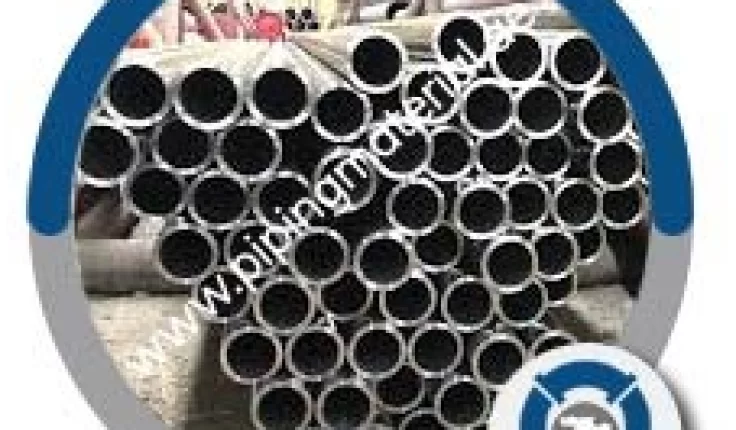SA 213 t11 tube
0 Views

-
Is SA213 T11 stainless steel?
SA213 T11 is not a “stainless steel.” It is a low alloy steel grade used in high-temperature services like boilers and heat exchangers. It’s part of the ASTM A213 standard specification for seamless ferritic and austenitic alloy-steel boilers, superheaters, and heat-exchanger tubes.
SA213 T11 is known for being solid and durable at high temperatures. It is also known for being very strong against thermal fatigue and creep. SA213 T11 is easy to work with in fabrication and welding, and the most common methods can be used to weld it. The material is also resistant to cracking from stress corrosion, so that it can be used in places with high temperatures.
It is important to remember that SA213 T11 tubes must be heat treated to get the right properties. Normalizing and tempering or quenching and tempering is the best way to heat treat this grade. SA213 T11 has a minimum tensile strength of 415 Mpa and a minimum yield strength of 205 Mpa in terms of its mechanical properties.
-
What is the difference between SA 213 t11 and t12 tubes?
Alloy steel tubes, such as SA213 T11 and SA213 T12, are used in high-temperature applications like boilers & heat exchangers. There are a few variations between the two grades:
Chemical composition: SA213 T11 and T12 have the same chemical makeup, but T12 has a little more carbon and a little less chromium than T11. The T11 alloy has a higher amount of chromium, which makes it better at resisting corrosion.
Tensile strength: The minimum tensile strength of SA213 T11 is 415 Mpa, while the minimum tensile strength of T12 is 385 Mpa. It means that T11 is more durable and stronger than T12.
Strength to yield: Both SA213 T11 and T12 have a minimum yield strength of 205 Mpa, meaning they both have the same yield strength.
Creep force: SA213 T11 is less likely to creep than SA213 T12. Creep is when a material slowly changes shape under a constant load. It is a big problem in high-temperature situations.
Temperature resistance: Because the sigma phase forms at temperatures above 482°C (900°F), T11 is recommended for long-term exposure to temperatures above 482°C (900°F). On the other hand, T12 is not recommended for long-term exposure to temperatures above 593°C (1100°F).
-
What is the sa213-t11 temperature range?
The temperature range for SA213 T11 alloy steel tubes depends on what they’re used for and how they’re used. But in general, SA213 T11 should be used at temperatures between -29 and 593°C (-20 and 1100°F).
SA213 T11 is a ferritic alloy steel made for heat exchangers that work at high temperatures. This material is renowned for its sturdiness, longevity, and resilience to extreme temperatures.
It’s important to remember that the actual temperature range will also depend on the application, the environment, and the methods used for making and welding. When figuring out the right temperature range for SA213 T11, it is essential to look at the relevant design codes and standards.
-
Where sa the 213 t12 tube used?
SA 213 T12 is a tube made of ferritic alloy steel that is seamless and made for use at high temperatures. The “T12” in the name means that the tube is made of a particular alloy with specific properties.
The Chromium, Molybdenum, and Tungsten in the SA 213 T12 alloy give the tube its high strength and resistance to corrosion at high temperatures. It also has good resistance to creep so it can be used in high-pressure applications.
SA 213 T12 tube are used in power plants, petrochemical plants, oil and gas refineries, and other industrial places that must be strong at high temperatures and resistant to corrosion. They are also used in superheaters and for different types of process equipment.
Also, it’s important to note that SA 213 T12 are usually sold in a condition called “normalized and tempered,” They are usually sold in random lengths or cut to specific lengths.
-
What is the import procedure for SA 213 t11 tube in Saudi Arabia?
The steps needed to import SA 213 T11 tube into Saudi Arabia will depend on the specific rules and requirements of the Saudi Arabian government at the time of import. In general, though, the import process may involve the following steps:
Get the licenses and permits you need to import. Before importing SA 213 T11, the importer must get licenses and permits from the right Saudi Arabian government agencies.
The SA 213 T11 will have to go through customs, where the importer will have to show all the necessary paperwork, such as the bill of landing, commercial invoice, and certificate of origin.
At the time of import, the person who brings the SA 213 T11 into the country will have to pay any import duties and taxes that apply.
A government or a third-party inspection agency may need to check the imported SA 213 T11 to ensure they meet quality and safety standards.
Once the imported SA 213 T11 tubes have passed any necessary inspections and cleared customs, they will be taken to the warehouse or facility of the importer.
Related Posts
How Do You Choose the Right Angle Bar Size and Material for Your Project?
Andrin Andrin / July 18, 2024











